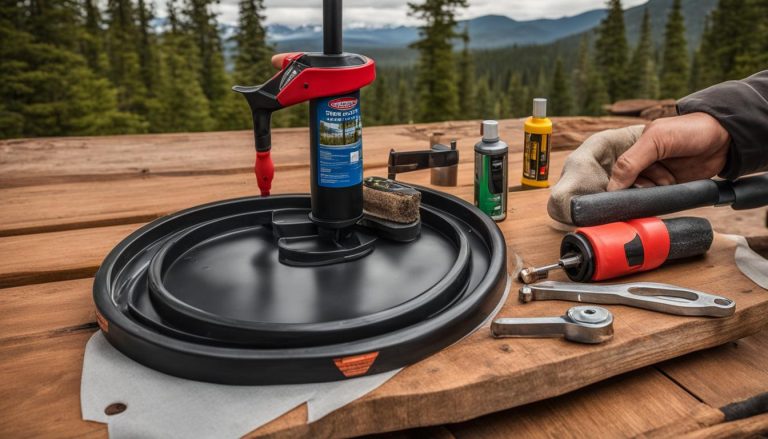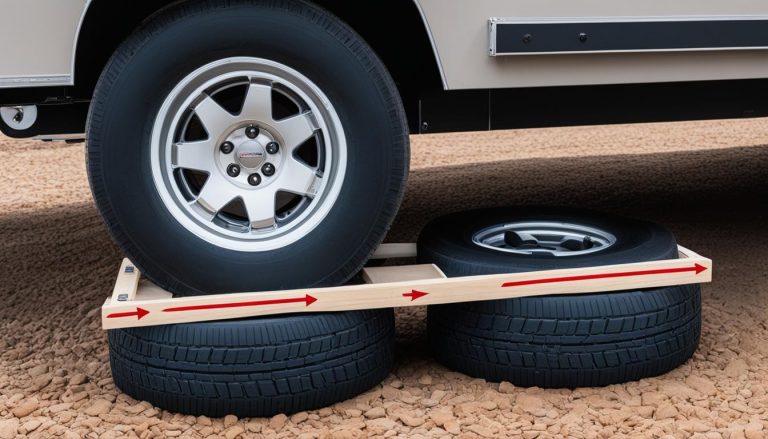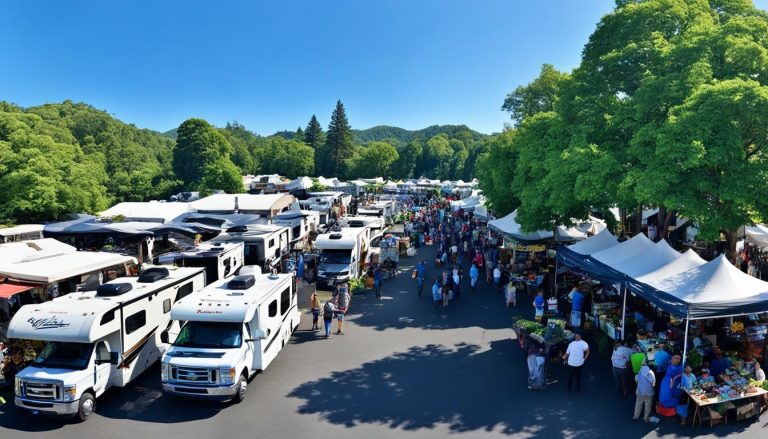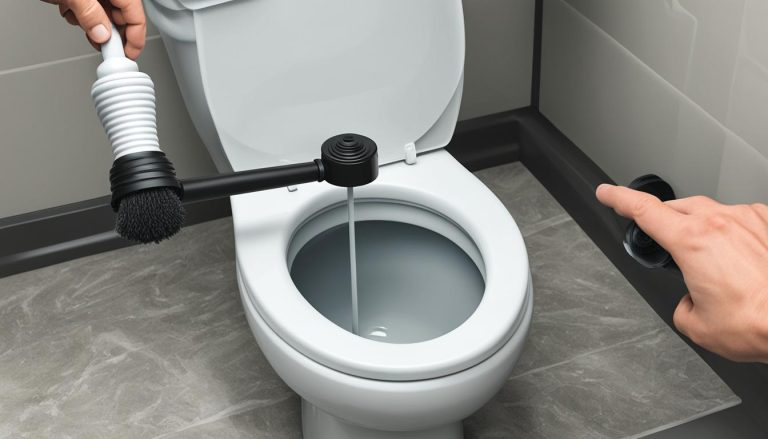Eliminate Odors: How to Remove Smell from RV Toilet
gorvlifestyle.com and its partners may earn a commission if you purchase a product through one of our links
Is the unpleasant smell from your RV toilet making your camping experience less enjoyable? Don’t worry, we’ve got the solution for you. Understanding the source of the odor is the first step towards banishing it from your RV. Contrary to popular belief, the smell is not coming from the toilet itself, but rather from the wastewater holding tanks. These tanks harbor anaerobic bacteria that produce smelly hydrogen sulfide gas as they break down waste, leading to the unpleasant odor.
To eliminate the smell and make your RV toilet fresh and odor-free, it’s important to replace the smelly bacteria with odor-free aerobic bacteria. This can be achieved through proper water usage in the holding tanks, the use of bacteria-based tank products, and ensuring proper ventilation. There are various methods and products available to help combat RV toilet odors, but it’s important to choose effective solutions that will effectively eliminate odor without causing counter-productive effects.
By following the tips and solutions provided in this article, you’ll be well on your way to enjoying an odor-free RV toilet experience. Say goodbye to unpleasant smells and hello to a fresh and clean environment in your RV!
Key Takeaways:
- Understanding that the odor is primarily coming from the wastewater holding tanks, not the toilet itself
- Replacing smelly anaerobic bacteria with odor-free aerobic bacteria is key to eliminating odors
- Adequate water usage, bacteria-based tank products, and proper ventilation are essential for controlling RV toilet odors
- Choose effective solutions and avoid counter-productive treatments that can contribute to the problem
- Enjoy a fresh and odor-free RV toilet experience by following the recommended tips and solutions
Why Your Toilet Stinks
The smell in your RV toilet is primarily coming from the wastewater holding tanks, not the toilet bowl itself. The holding tanks are designed to hold liquid and solid waste until they are dumped. The smell is caused by anaerobic bacteria, which release smelly hydrogen sulfide gas as they break down waste. To eliminate the odor, it’s important to replace the anaerobic bacteria with aerobic bacteria, which do not produce odors. Aerobic bacteria require oxygen-rich, water-filled environments to break down waste effectively.
Adding bacteria-based tank products, such as Unique RV Digest-It Plus, can introduce odor-free aerobic bacteria into the tanks and help eliminate odors.
| Problem | Cause | Solution |
|---|---|---|
| Unpleasant odor in the RV toilet | Anaerobic bacteria in the wastewater holding tanks | Replace anaerobic bacteria with odor-free aerobic bacteria using bacteria-based tank products |
| Hydrogen sulfide gas release | Breakdown of waste by anaerobic bacteria | Introduce aerobic bacteria that do not produce odors |
By promoting the growth of aerobic bacteria, you can effectively eliminate the odor in your RV toilet. Bacteria-based tank products, like Unique RV Digest-It Plus, contain specialized strains of aerobic bacteria that aid in waste breakdown and odor control.
How to Keep RV Toilets from Smelling
To prevent RV toilet smells, it’s important to address common issues that can contribute to odor problems. By taking proactive steps, you can ensure a fresh and pleasant environment in your RV.
Adequate Water Usage
One common cause of RV toilet smells is not using enough water in the holding tanks. Insufficient water levels can lead to waste buildup and increased odors. To prevent this issue, be sure to use an adequate amount of water with each flush. This helps in diluting the waste and maintaining a healthier, odor-free tank. Additionally, consider switching to biodegradable RV-grade toilet paper that breaks down easily, further preventing clogs and odors.
Maintaining Ideal Tank Temperature
Another factor that can contribute to RV toilet smells is having holding tank temperatures outside the ideal range. High temperatures can accelerate the growth of odor-causing bacteria, leading to stronger odors. To maintain optimal tank temperature, park your RV in shaded areas when possible and consider using tank insulation to regulate temperature.
Choosing Effective Tank Treatment Products
Using the right tank treatment products is crucial for preventing odors. Many products claim to eliminate odors, but not all are effective. Look for bacteria-based tank treatments that contain odor-free aerobic bacteria. These bacteria can outcompete the smelly anaerobic bacteria present in the tanks, helping to break down waste without producing unpleasant odors. One highly recommended product is Unique RV Digest-It Plus, which introduces odor-free aerobic bacteria into the tanks. This helps in eliminating odors and maintaining a healthier RV toilet environment.
Ensuring Proper Ventilation
Proper ventilation is essential for preventing odors from lingering in your RV. Make sure that vents and fans are in good working condition and provide adequate airflow. Opening windows and roof vents when possible also helps in improving air circulation and reducing odors.
Regular RV Toilet Maintenance
Maintaining your RV toilet regularly is key to preventing odors. Cleaning the toilet bowl, checking for any leaks or damage, and ensuring that all components are functioning properly can significantly reduce the risk of unpleasant smells. Stay on top of maintenance tasks and address any issues promptly to keep your RV toilet smelling fresh.

By following these tips and addressing potential issues, you can keep your RV toilet smelling clean and fresh throughout your travels. Remember, adequate water usage, maintaining ideal tank temperature, using effective tank treatment products, ensuring proper ventilation, and regular RV toilet maintenance are all crucial steps in preventing odors and enjoying a pleasant RV experience.
Refill the Water to Keep Things Flowing Smoothly
Proper water usage is crucial for maintaining a fresh and odor-free RV toilet. Keeping the black holding tank(s) adequately filled with water is essential for preventing unpleasant odors. The solid waste inside the black tank(s) should always be completely covered by water to create a barrier that prevents sewage odor from escaping. Remember to refill the water in the toilet bowl after each use as well, as this helps control odors.
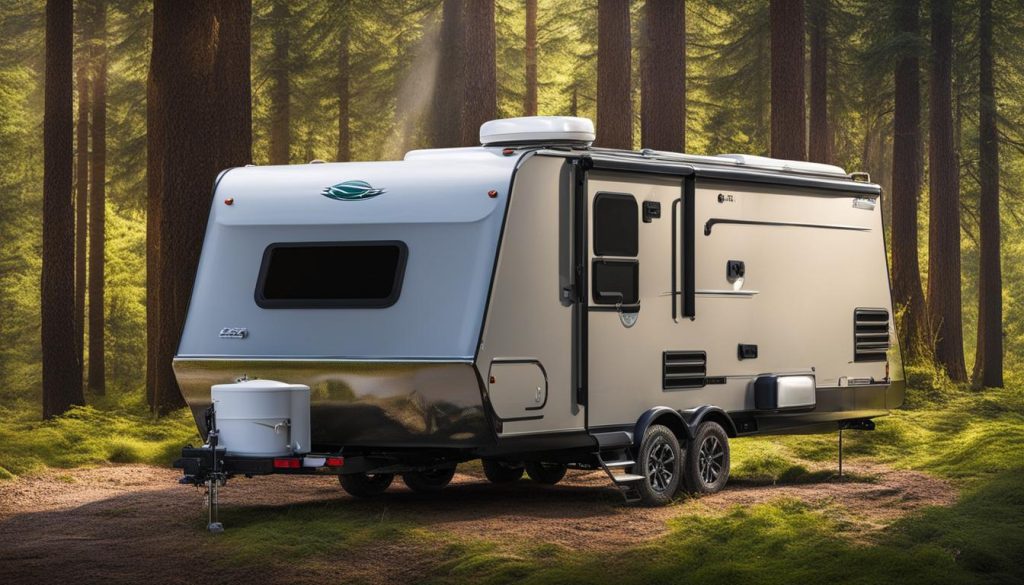
Add Water With Each Flush and Black Water Tank Chemicals
Adding water to your RV’s black water tank with each toilet flush is an important step in preventing unpleasant odors. This practice helps maintain a healthy level of liquid in the tank, ensuring that waste is properly mixed with fluid and minimizing the chances of odors developing.
When flushing the toilet, make sure to use enough water to assist in controlling odors. This will help maintain a sufficient water level in the tank, creating a barrier that prevents sewage odor from escaping into your living space.
Additionally, using specialized holding tank chemicals can play a vital role in odor control. These chemicals are designed to break down waste and control odors, enhancing the overall cleanliness of your RV’s black water tank. Follow the manufacturer’s instructions on how often to add these chemicals to your toilet.
To keep your black water tank in optimal condition, regular maintenance is key. This includes cleaning the tank and utilizing tank cleaning agents. By following proper RV toilet maintenance practices, you can minimize the risk of odors and ensure a pleasant experience during your RV trips.
Preventing and Cleaning Clogs
Preventing clogs in the black water tank is crucial for maintaining an odor-free RV toilet. Clogs often occur due to the use of regular toilet paper that does not break down easily in the tank. To prevent clogs, it’s recommended to use biodegradable, RV-grade toilet paper that dissolves more easily.
If a clog does occur, there are several DIY methods you can try to unclog the black water tank. Here are a few options:
- 1. Ice Method: Fill a bag with ice and place it in the toilet bowl. Let the ice melt and flush the toilet to see if it helps dislodge the clog.
- 2. Chemical Method: Use specialized RV tank treatment chemicals designed to break down waste and unclog the tank. Follow the manufacturer’s instructions for proper use.
- 3. Boiling Water Method: Boil a pot of water and carefully pour it into the toilet bowl. The hot water can help dissolve and remove the clog.
- 4. Backflushing Method: Utilize a backflushing device specifically designed for RV black water tanks. This method can help clear clogs by creating a reverse flow of water to dislodge the blockage.
Regular maintenance and cleaning of the black water tank can also help prevent clogs. It’s important to follow proper RV toilet maintenance practices, including:
- 1. Using an adequate amount of water with each flush to help keep waste moving smoothly.
- 2. Using biodegradable, RV-grade toilet paper that breaks down easily.
- 3. Avoiding flushing any materials that could potentially cause clogs, such as wipes or feminine hygiene products.
| Clog Prevention Tips | DIY Unclogging Methods |
|---|---|
| 1. Use biodegradable, RV-grade toilet paper | 1. Ice Method: Flush with ice in the toilet |
| 2. Flush with ample water after each use | 2. Chemical Method: Use specialized RV tank treatment chemicals |
| 3. Avoid flushing wipes or feminine hygiene products | 3. Boiling Water Method: Pour boiling water into the toilet |
| 4. Regularly clean and maintain the black water tank | 4. Backflushing Method: Use a backflushing device |
Regularly caring for your RV toilet and following these preventive measures can help keep your black water tank free from clogs and ensure the efficient operation of your RV’s wastewater system.
Scour and Clean Your Tank
Regularly cleaning your RV toilet’s black water tank is crucial for maintaining an odor-free and hygienic environment. To ensure effective cleaning, pay special attention to the walls and bottom of the tank, where stubborn residue may accumulate.
Using high-quality tank cleaning agents, such as Aqua-Kem, can help break down waste and eliminate odors, leaving your tank fresh and clean. These cleaning agents are specifically designed to target the bacteria and buildup that contribute to unpleasant odors.
It is advisable to clean the tank a few times a year, depending on your usage. Regular cleaning will help prevent the accumulation of residue and the growth of odor-causing bacteria. If you prefer a more comprehensive cleaning, professional tank cleaning services are available to provide a thorough cleanse of your RV toilet system.
Remember, in addition to tank cleaning, it is essential to maintain regular RV toilet maintenance, which includes cleaning the toilet bowl and regularly checking for any leaks or damage. By keeping up with proper cleaning and maintenance practices, you can ensure a fresh and odor-free RV toilet.
FAQ
How can I remove the smell from my RV toilet?
To remove the smell from your RV toilet, it’s important to address the odors coming from the wastewater holding tanks. Replace the smelly anaerobic bacteria in the tanks with odor-free aerobic bacteria using bacteria-based tank products like Unique RV Digest-It Plus. Adequate water usage in the tanks and proper ventilation are also crucial for controlling odors.
Why does my RV toilet stink?
The smell in your RV toilet primarily comes from the wastewater holding tanks, not the toilet bowl itself. Anaerobic bacteria in the tanks release smelly hydrogen sulfide gas as they break down waste. This is what causes the odor. Replacing the anaerobic bacteria with odor-free aerobic bacteria is key to eliminating the smell.
How can I prevent my RV toilet from smelling?
To prevent RV toilet smells, make sure to use enough water in the holding tanks, maintain optimal tank temperatures, use effective tank treatment products, and ensure proper ventilation. Regular RV toilet maintenance, including cleaning the toilet bowl and checking for leaks or damage, can also help prevent odors.
How much water should I add to my black holding tank?
It’s important to keep the black holding tank adequately filled with water to prevent odors. The solid waste inside the tank should always be completely covered by water to create a barrier against sewage odor. Refilling the water in the toilet bowl after each use is also important for odor control.
Should I use special chemicals in my black water tank?
Yes, using specialized holding tank chemicals can help break down waste and control odors in the black water tank. These chemicals should be added periodically according to the manufacturer’s instructions. Regular cleaning of the black water tank and following proper RV toilet maintenance practices are also important for odor prevention.
How can I prevent and unclog my black water tank?
To prevent clogs in the black water tank, use biodegradable, RV-grade toilet paper that breaks down easily. If a clog does occur, you can try various DIY methods, such as using ice, special chemicals, or boiling water. Backflushing the tank with a dedicated device can also help clear clogs. Regular tank maintenance and cleaning can help prevent clogs.
How often should I clean my black water tank?
It’s recommended to thoroughly clean the black water tank a few times a year, depending on usage. Use tank cleaning agents like Aqua-Kem to break down waste and eliminate odors. Professional tank cleaning services are also available for a more thorough cleaning if needed.

